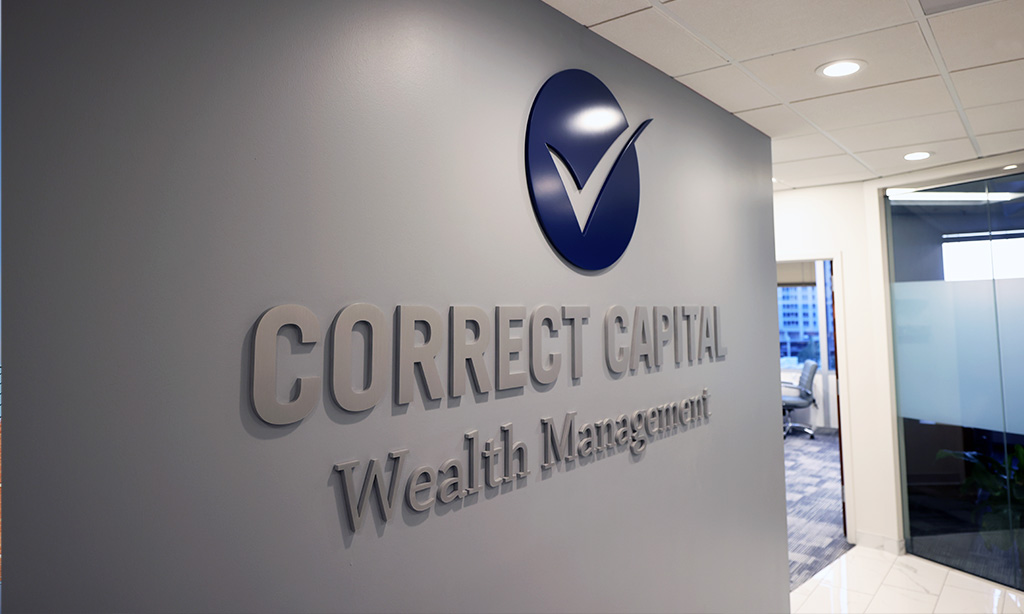
Enterprise Architecture Services - Outcome-Driven Enterprise Architects
Enterprise architecture (EA) is developed for business growth and an operation's entire tech stack.

Digital Security With EA Cloud Integration
Top cloud Enterprise Architecture & risk management for business growth.
Enterprise Architecture (EA) helps identify and address potential risks in any system like an API. This may include ADA compliance, cybersecurity, and other factors. Cloud Enterprise Architecture (CEA) involves designing and implementing enterprise-scale solutions that leverage cloud computing technologies. Risk management is a crucial aspect of CEA, as it involves identifying, assessing, and mitigating potential risks associated with cloud-based solutions. Some key considerations for risk management in CEA include:
Robust Data Security
Regulatory Compliance
Reliable Service & Monitoring
Overall, effective risk management in Cloud Enterprise Architecture requires a proactive approach, continuous monitoring, and adherence to industry best practices to address evolving threats and vulnerabilities in a cloud environment.
View Development Services
Scalable & Flexible EA
What companies need an IT Enterprise Architecture consultant?
Any large organization relies on IT infrastructure, hardware, networks, AWS and other cloud services and technologies related to enterprise architecture. Your tech stack is not just a component of your business–it becomes a driving force for higher revenue and better operations, optimized for efficiency, scalability, and innovation, aligning seamlessly with your goals.
Hexxen helps industries across the board with application, information, and infrastructure architecture. These industries include:

Streamline Your DevOps With Custom Enterprise Architecture
Custom IT Enterprise Architecture Services & ERP selection.
Webhooks–or when certain digital software communicates to itself–are an important component of EA. For example, you might need a fulfillment center to feed information to a product catalog that connects to a payment processor.
This includes creating and choosing an enterprise architecture that allows you to track growth, streamline your back-of-office operations, and innovate your company. Our job is to protect data, mitigate risks, and comply with various regulations.

Build Efficient Enterprise Architecture
The best Enterprise Architecture & full-scale operational development services.
Enterprise architecture also includes governance structures and standards to guide decision-making, manage changes, and maintain consistency across the organization. Our expertise in EA extends to establishing robust governance models and ensuring ADA compliance that aligns with both regulatory requirements and your business objectives.
This includes different approaches for each organization. Enterprise architecture touches on:
- Supply Chain Optimization
- AI & Machine Learning Implementation
- Research & Development
- Smart Technology & ChatGPT
- Cloud Migration & Optimization
- DevOps Practices
- Legacy System Modernization
- API Development & Management
Enterprise architecture creates a work environment that improves efficiency, reduces costs, and by proxy helps your business grow.
View Development ServicesEnterprise Architecture Consulting – Outcome-Driven Enterprise Architects
Enterprise architecture grants a competitive edge by enabling businesses to outline their current position (the current state), envision their desired destination (the future state), and determine the necessary adjustments (in technology, processes, etc.) to navigate the most direct and efficient path toward that destination.

Enterprise architecture (EA) is a specific school of thought in the IT world, encompassing tech integrations, enterprise systems, operations, project management, and other areas within any major organization.
EA is developed around an overall mission, vision, and future for businesses. Hexxen is here to help your organization with long-term growth and stability. Adding value to your business involves about every conceivable level on the front- and back-end of your company. We take each problem in stride and make sure that whatever software, technologies, and systems are employed make the most sense.
Hexxen helps organizations align their goals, priorities, and techniques we use to create more (and better) business. This includes:
Microsoft Azure
Data Modeling
KPI Reporting
Software Automation
Legacy Modernization
This also includes organizational structure, information and application architecture, and technology architecture. Bringing your tech stack together with enterprise architecture is a process but one that can accelerate business growth and operational efficiency.
What Is Enterprise Architecture?
Enterprise architecture has different use-cases based on the needs of an organization. This can be broken down into five basic types:
- Business: In this sense, enterprise architecture allows businesses and other organizations to streamline operations and achieve strategic objectives.
- Data: This includes data governance, management, and collating and archiving information that is essential for decision-making and business direction.
- Applications: How applications (apps, web tools, systems, etc.) tie in to the user experience and cooperate with other systems within an organizations.
- Security: Data integrity, confidentiality, and access permissions to the right people is essential to make sure a business runs smoothly and safely.
- Technology: How your network, software, and hardware interact and communicate while providing full support for business goals.
What Is The Enterprise Architecture Process?
Taking the long view of enterprise architecture means analyzing, planning, and building an IT structure that fits into your organization. There are a few things to keep in mind:
- Understanding Business Strategy: Begin by aligning enterprise architecture efforts with the overarching business goals and objectives.
- Current State Assessment: Evaluate the existing architecture, including systems, processes, data, and technology infrastructure.
- Future State Definition: Envision the desired future state of the enterprise, considering business goals, market trends, and technological advancements.
- Gap Analysis: Identify the gaps between the current state and the future state, determining what needs to change or improve to achieve the desired outcomes.
- Roadmap Development: Create a detailed plan or roadmap outlining the steps required to transition from the current state to the future state.
- Implementation: Execute the roadmap, implementing changes, updates, or new solutions as outlined in the plan.
- Monitoring and Iteration: Monitor the enterprise architecture, gather feedback, and make adjustments as needed to ensure alignment with business objectives and evolving market conditions.
Hexxen is here to guide you through these steps.
Why Should You Invest in Enterprise Architecture?
Enterprise architecture allows companies to align IT infrastructure with business goals to meet financial benchmarks and efficiency goals. Whether you implement Zachman, FEAF (Federal Enterprise Architecture Framework), Gartner Enterprise Architecture Framework, or a different platform, EA’s structured methodology is one of the best ways for businesses to grow and thrive. See below for a few of the benefits:
- Strategic Alignment: Aligns IT strategy and operations with business objectives. Ensures that investments in technology support business goals.
- Improved Agility: Enhances the organization’s ability to respond to market changes and new opportunities. Facilitates faster decision-making and implementation of new initiatives.
- Cost Efficiency: Identifies and eliminates redundancies in processes and systems. Optimizes resource utilization and reduces operational costs.
- Better Risk Management: Identifies potential risks and implements controls to mitigate them. Ensures compliance with regulatory requirements and industry standards.
- Enhanced Collaboration: Promotes communication and collaboration across different departments and business units. Ensures a unified approach to achieving business goals.
A few of the most popular enterprise frameworks include:
- TOGAF (The Open Group Architecture Framework): Provides a comprehensive approach to designing, planning, implementing, and governing enterprise architecture. It is widely used for its structured methodology and detailed guidelines.
- Zachman Framework:Focuses on providing a structured way of viewing and defining an enterprise. It uses a matrix to organize and categorize the various elements of enterprise architecture.
- FEAF (Federal Enterprise Architecture Framework): Developed by the U.S. federal government, FEAF provides a common approach for integrating strategic, business, and technology management across agencies.
- Gartner Enterprise Architecture Framework: Offers a pragmatic approach, focusing on delivering business value through strategic planning and management of IT resources.
Enterprise architecture helps you manage complex systems, processes, and innovate all while optimizing ROI and meeting your organization’s goals.
Why Would You Need Enterprise Architecture?
Exploring enterprise architecture can address several critical issues that may be hindering your organization’s performance and growth. You should call Hexxen’s enterprise architects now if…
- If your existing systems are too complex and getting out of hand: When systems become overly complicated, it can be challenging to manage and maintain them efficiently. Enterprise architecture helps streamline processes and simplify system interactions.
- Current infrastructure is bulky and lacks quick, agile adaptability: In today’s fast-paced business environment, agility is key. An effective enterprise architecture enables your organization to quickly adapt to changes and new opportunities.
- If you have an IT bottleneck and fixes to simple issues become major problems: When minor IT issues escalate into significant problems, it often indicates underlying inefficiencies. Enterprise architecture identifies and addresses these bottlenecks to improve overall system performance.
- Goals and core initiatives aren’t being met: If your business goals and strategic initiatives are not being achieved, it may be due to misalignment between IT and business objectives. Enterprise architecture ensures that IT systems and processes are aligned with and support your business strategy.
By investigating and implementing enterprise architecture, you can create a more streamlined, agile, and effective IT environment that supports your organization’s strategic goals and enhances overall performance.
Enterprise Architecture & Data Modernization Consultants
EA helps businesses develop internal processes, goals, and roles within any organizational structure.
This includes data architecture, application architecture, technologies, security, enterprise governance, change management, strategic planning, and setting up systems for performance management.
Strong enterprise architecture is usually represented by visual models and diagrams that make it easy for shot-callers to understand everything that’s going on and what to expect. Our EA helps organizations adapt to change as efficiently as possible.
Enterprise Architecture Tools & Software
There are a handful of name-brand tools like Microsoft Excel, PowerPoint, and QuickBooks that serve as foundations for entire organizations. That’s just the start–there are countless third-party applications like Orbus, Sparx, BiZZdesign, SAP, and even AI-based applications that might play a role in growing your business.
Our experts can help various industries improve their internal processes and customer success programs. It’s crucial to consider your entire pipeline and how transactions operate within your organization. “Less is more” is always the goal, but we have to get there first. There are benefits of custom architecture, including:
- Lay out the foundation to easily scale your business.
- Ensures that internal workflows flow smoothly between internal teams.
- Create a user experience that makes customers want to come back.
- Tools created for your team that are more efficient and easy to use.
Modernize Your Data Stack With Enterprise Architecture
Enterprise architecture has shed its image of being a disconnected and theoretical discipline, often perceived as an “ivory tower” role. Modern enterprise architecture practices have undergone significant evolution, becoming more collaborative and practical. Today, enterprise architects actively collaborate with business units, IT teams, and stakeholders to comprehend their requirements, offer solutions, and ensure that architecture decisions are firmly rooted in real-world challenges and opportunities. This shift in approach has rendered enterprise architecture a pragmatic and indispensable function within organizations.
Enterprise Architecture With Secure Data Systems
This includes implementing security controls, access management systems, encryption protocols, and continuous monitoring mechanisms across the organization’s digital ecosystem. By integrating security principles into enterprise architecture, organizations can proactively address cybersecurity threats and safeguard their digital assets effectively.
EA-level security protocols include firewalls, intrusion detection systems (hackers, and other cyber threats. Protecting your data is one of the most important things you can do for your organization and customers–this all starts with effective enterprise architecture. Integrating security principles into enterprise architecture means embedding security considerations into every aspect of IT infrastructure design and implementation. This holistic approach ensures that security is not an afterthought but a fundamental aspect of the organization’s digital ecosystem, providing proactive protection against cyber threats and safeguarding digital assets effectively.
Call Hexxen today at (314) 499-8253 and create the right enterprise architecture for your organization.
Develop. / code
Develop.
/ code










